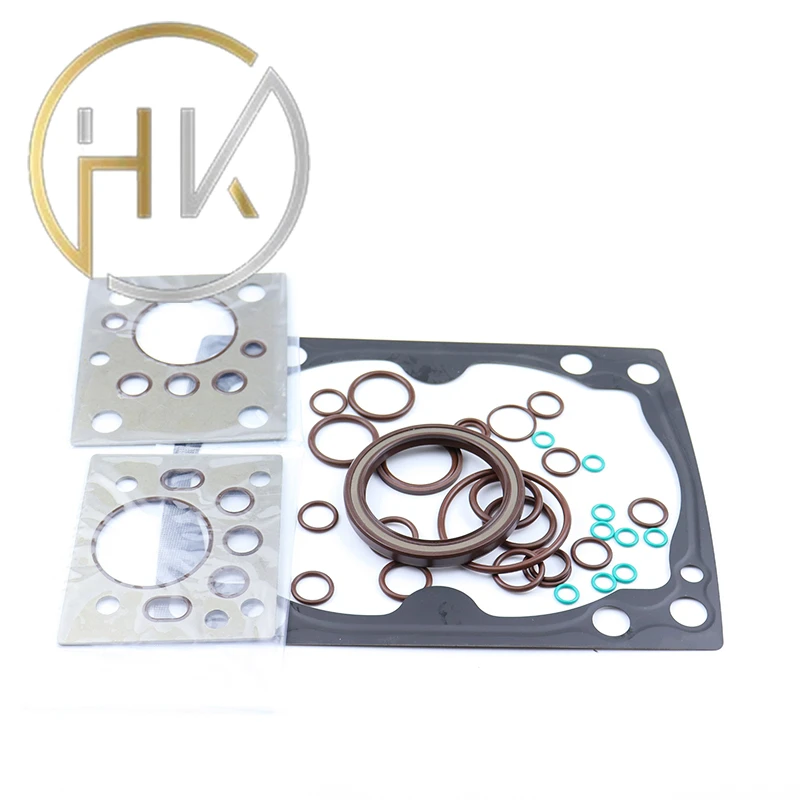Dec . 12, 2024 09:14 Back to list
hydraulic cylinder seal kit replacement
Hydraulic Cylinder Seal Kit Replacement A Comprehensive Guide
Hydraulic systems are essential in various industries, ranging from construction to manufacturing, due to their ability to convert fluid power into mechanical energy. One of the critical components of hydraulic systems is the hydraulic cylinder, which relies on seals to maintain pressure and efficiency. However, over time, these seals can wear out due to factors such as heat, contamination, and frequent use. Consequently, a hydraulic cylinder seal kit replacement becomes necessary to ensure optimal system performance.
Understanding Hydraulic Seals
Hydraulic seals serve to prevent fluid leakage and contamination from entering the cylinder. They come in various types, including O-rings, rod seals, and piston seals, each designed to withstand high pressure and temperature while maintaining a tight seal. When seals fail, it results in fluid leakage, reduced efficiency, and potential equipment damage.
Signs of Worn Seals
Identifying the signs of worn seals early can save time and cost in repairs. Common indicators include
1. Fluid Leakage The most obvious sign is the presence of hydraulic fluid around the cylinder. 2. Decreased Performance If the hydraulic system is underperforming or responding slowly, it may indicate seal wear. 3. Cylinder Drift If the cylinder drifts or moves without control, it may point to seal failure. 4. Unusual Noises Unwanted sounds such as grinding or squealing can also signify seal issues.
Preparing for Replacement
Before initiating the seal replacement process, it is crucial to gather the necessary tools and materials, which typically include
- A new hydraulic seal kit - Wrenches and sockets - Screwdrivers - Pliers - A clean workspace - Safety goggles and gloves
Always consult the equipment manual to ensure you have the correct seal kit compatible with your hydraulic cylinder.
hydraulic cylinder seal kit replacement

Step-by-Step Replacement Process
1. Safety First Power down the hydraulic system and ensure that all pressure is released. Disconnect the battery if necessary.
2. Remove the Cylinder Carefully detach the hydraulic cylinder from its mounting. This may require loosening bolts and carefully pulling the cylinder free.
3. Disassemble the Cylinder Once removed, use the appropriate tools to disassemble the cylinder. Pay close attention to the order of components, as this will aid in reassembly.
4. Remove Old Seals Take out the old seals, which can often be done using a pick or similar tool. Remember to clean the grooves thoroughly to remove any debris or fluid residue.
5. Install New Seals Carefully place the new seals into their respective grooves. Ensure they are seated properly without any twists or gaps. Applying a thin layer of compatible lubricant can help in the installation process.
6. Reassemble the Cylinder Once the new seals are in place, reassemble the cylinder in the reverse order of disassembly. Make sure to tighten all bolts and screws to the manufacturer’s specifications.
7. Reattach and Test After successfully reinstalling the cylinder, reattach it to the hydraulic system. Reconnect the power and check for any leaks. It is advisable to conduct a test run to ensure everything operates smoothly.
Conclusion
Replacing hydraulic cylinder seals is crucial for maintaining the efficiency and longevity of hydraulic systems. Regularly monitoring your hydraulic equipment for signs of wear can help prevent unexpected break-downs. While the process may seem daunting, following the steps outlined above will make the replacement manageable, providing you with the confidence to tackle this essential maintenance task. By putting forth the effort to replace worn seals, you can enhance the performance of your hydraulic systems and avoid costly repairs in the future.
-
TCN Oil Seal Metal Ring Reinforcement for Heavy Machinery
NewsJul.25,2025
-
Rotary Lip Seal Spring-Loaded Design for High-Speed Applications
NewsJul.25,2025
-
Hydraulic Cylinder Seals Polyurethane Material for High-Impact Jobs
NewsJul.25,2025
-
High Pressure Oil Seal Polyurethane Coating Wear Resistance
NewsJul.25,2025
-
Dust Proof Seal Double Lip Design for Construction Equipment
NewsJul.25,2025
-
Hub Seal Polyurethane Wear Resistance in Agricultural Vehicles
NewsJul.25,2025
-
The Trans-formative Journey of Wheel Hub Oil Seals
NewsJun.06,2025
Products categories
















